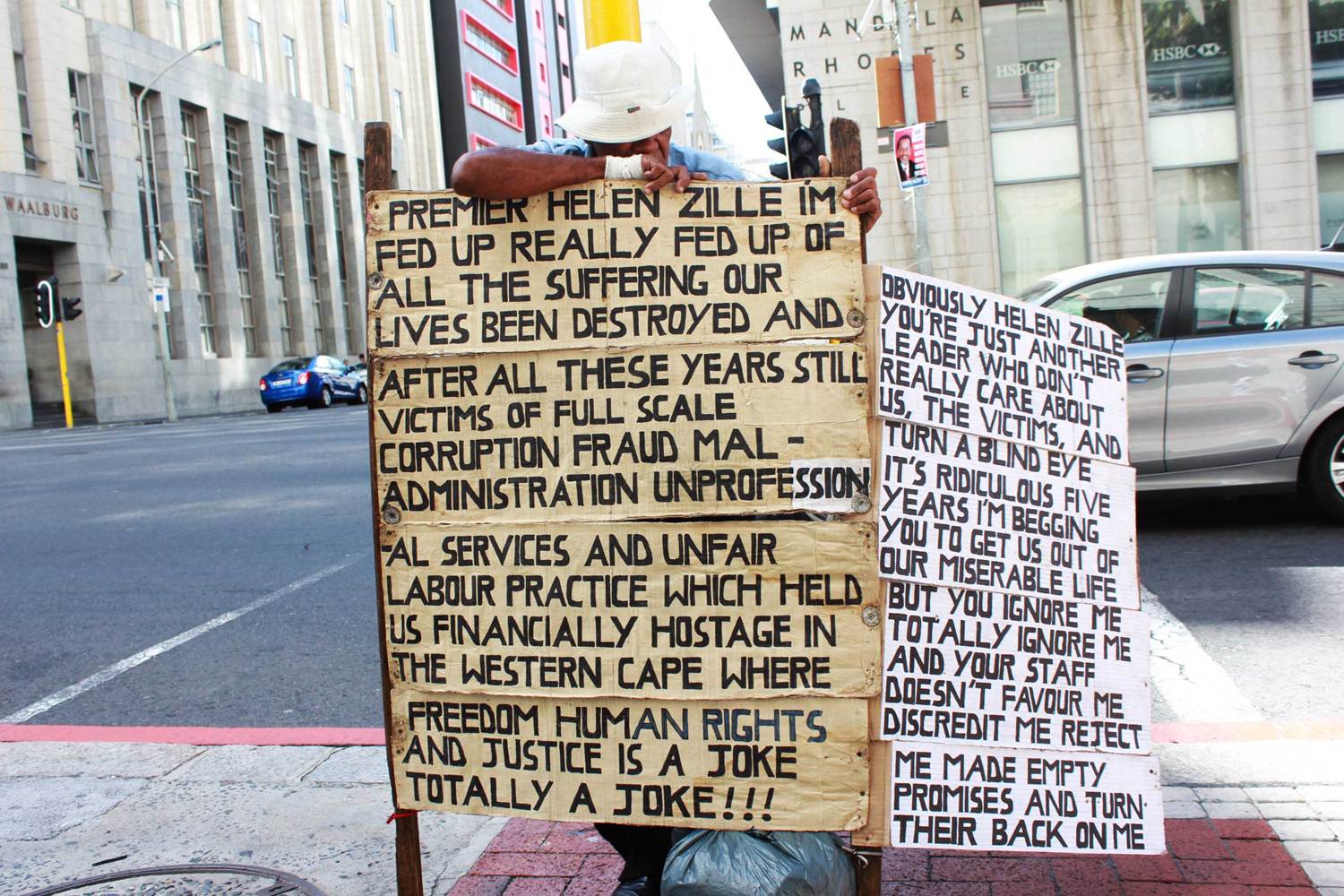There are more people in South Africa who want to work but can’t find work than there are people and dogs in all of New York City – and that’s a lot! Earlier this month, Stats SA released its first quarter Labour Force Survey for 2016. The survey found our official unemployment rate to be at a 10-year high of 26.7%, with 5.7 million people unemployed. MUSA MANZA explains why these figures don’t reflect the true state of South Africa’s economy.
The StatsSA figures give some insight into unemployment in South Africa, but the reality is far worse. Due to the high costs of job-searching (Sunday Times – R22 a copy, bus/taxi fare, printing and posting CVs, internet) and the low probability of finding a job due to the shortage, many job-seekers are discouraged from searching. When we include the discouraged job-seekers amongst the unemployed, the unemployment rate soars to 36.3% at 8.9 million. This is known as the “broad definition of unemploymentâ€.
At present, there 15.66 million people employed in our economy. The figure is up from 15.46 million a year ago. Although the economy continues to create jobs, employment creation has not kept up with the growing labour force. Over the last year, employment grew by 1.2%, while the labour force grew by 1.8%. Basically, the number of people able and willing to work grew faster than the number of jobs in the economy.
Worse still, certain sectors of the economy have been shedding jobs. Over the last 12 months, 140, 730 jobs were lost in the manufacturing sector. Manufacturing employment is now at its lowest level in over eight years. The sector’s contribution to the country’s employment has been in steady decline. It now employs 1.6 million people, compared to over 2.1 million just eight years ago.
The economy’s unwanted children
Unemployment is highest amongst young people. In the 15-24 year age group, unemployment – broadly measured – is a scary 67.3%, compared to the national average of 36.3%. There are 5.9 million people unemployed under the age of 34, making up around two-thirds of all the unemployed.
High youth unemployment presents a major challenge for the country. Almost six million young people are reduced to the indignity of begging, depending on others, digging through rubbish, or forced into crime. The dignity of working, earning and spending may never be their lot. About half the unemployed youth have never worked before. This means that they are less likely to develop skills and experience needed to find work in the future or start a business. They are rendered the economy’s unwanted children.
Of the unemployed youth, 85% have a matric or less, while only 1% are graduates. This shows that anything less than a degree may not get you a job. Young South Africans are fully aware of this reality, the result: oversubscribed universities, student protests and #FeesMustFall.
Why?
The reasons for the country’s high unemployment rate are numerous. Over the past six years (since the 2008 global financial crisis), the world economy grew very slowly. This decreased demand for South Africa’s exports. Lower demand for our exports, combined with a national electricity shortage, and long and disruptive labour strikes contributed to a period of slow domestic growth and lower investment. Low growth and investment resulted in fewer jobs being added to the economy.
Over this period, government tried to promote job creation through a range of incentives and programs. These included promoting small business and entrepreneurship, providing temporary employment through its Expanded Public Works Program, funding employment creation through the Jobs Fund, and giving businesses tax breaks for employing youth. Whether these have worked or not is unclear – in the absence of these initiatives, unemployment may have, in fact, been higher. What is clear is unemployment is still too high and rising. What is also clear is that government is running out of money to continue trying to create jobs.
What can be done?
We must continue to improve the quality of and access to school and post-school education with the limited resources available. Not everyone will have access to higher education, but as many as possible should. Government must allocate as many resources as it can to promote job creation, especially for young people. It is also critical for government to earn the trust of business if business is to invest and create more jobs. For this, accountable and competent leadership is required. It won’t be easy. Even if we are able to get this right, we’re still in part dependent on the recovery of the global economy. Until then, the 8.9 million beg, borrow, steal and dream of dignity.
Musa Manza is a rebel economist









